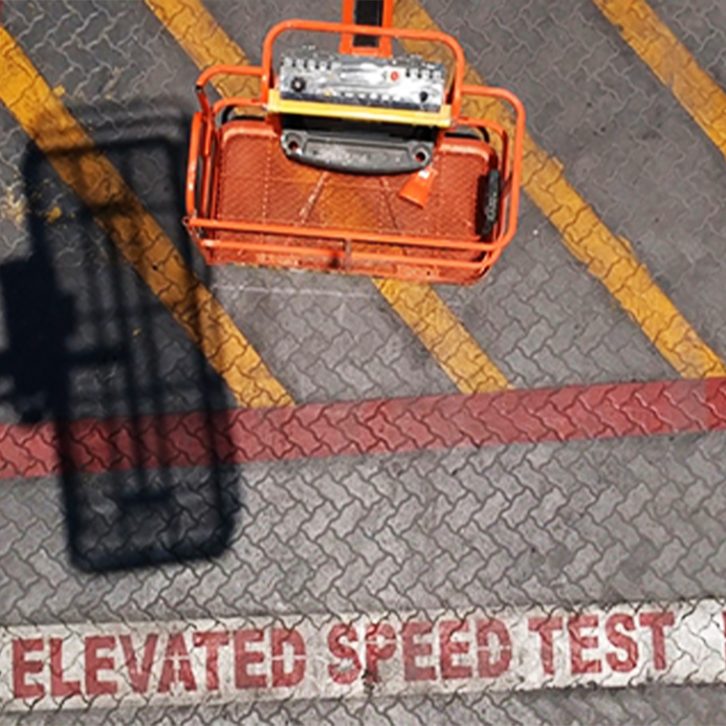
20 June, 2019
Manlift Elevated Drive Speed Checks
However, for safety reasons, it is only possible to drive an AWP at the maximum speed when the boom or scissor lift is in transport or stow position. When the boom or scissor lift is elevated, the machine is less stable, and driving at an excessive speed could cause the AWP to tip over. Accordingly, a “limit switch” or “proximity switch” automatically triggers a message communicated to the onboard computer that the access platform is in an elevated position. Instead of the maximum speed of perhaps 6 km/hour, the computer automatically limits the maximum speed to what is called “elevated drive speed”.
Safety Steps at First Check
At Manlift, we test to make certain that this elevated drive speed restriction is operational in a specified area of our yard. We do this as part of the first check responsibility as soon as the machine comes back off-hire. During this first check, the AWP is timed as it is driven with the boom or scissor lift in an elevated position over a set distance of 10 to 20 meters. That way, our first checker can make absolutely certain that the elevated drive speed as specified by the manufacturer is not exceeded. The checker records the result on the first check document so that we know whether or not it is within the safe speed parameters.
If the checker does notice any discrepancy, it is flagged for the mechanical engineers in the workshop to make the required adjustments to ensure that the elevated drive speed is in full compliance with the manufacturer’s safe speed limit.
It is of the utmost importance to take these safety precautions and check that the elevated drive speed is set properly. Once the equipment is on a work site, we recognize that operators are unlikely to make this check. Carrying out this essential test is but one example of how Manlift, as the owner of the access platform, takes responsibility for ensuring our equipment can be safely operated before we hand it over to the customer.